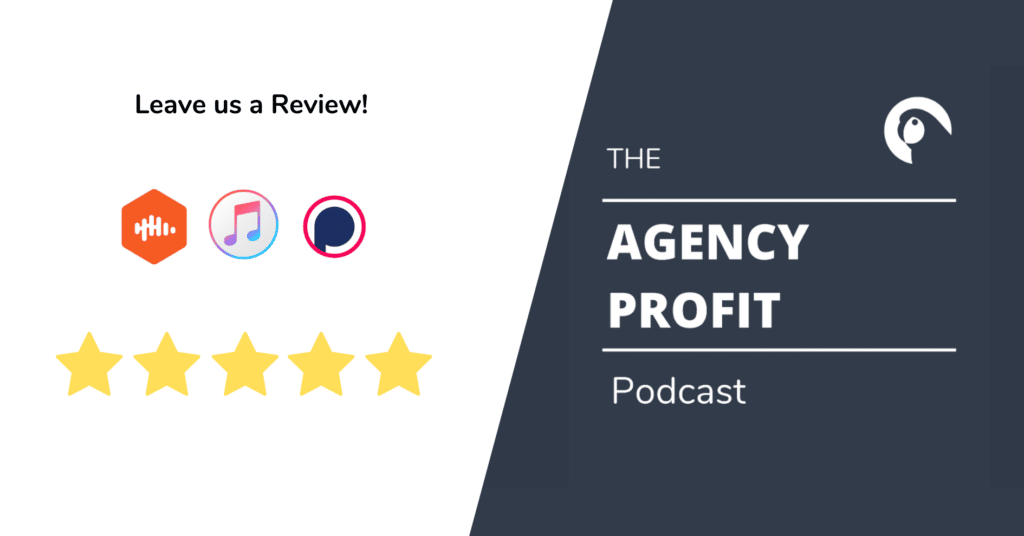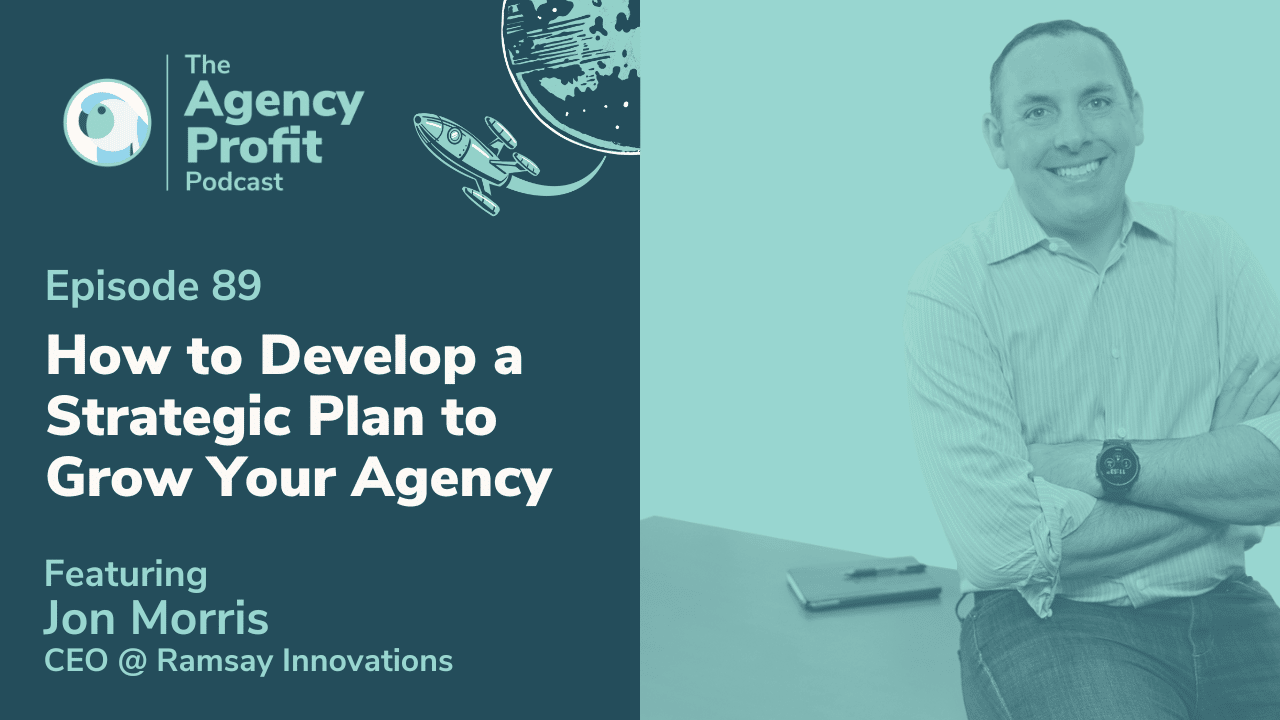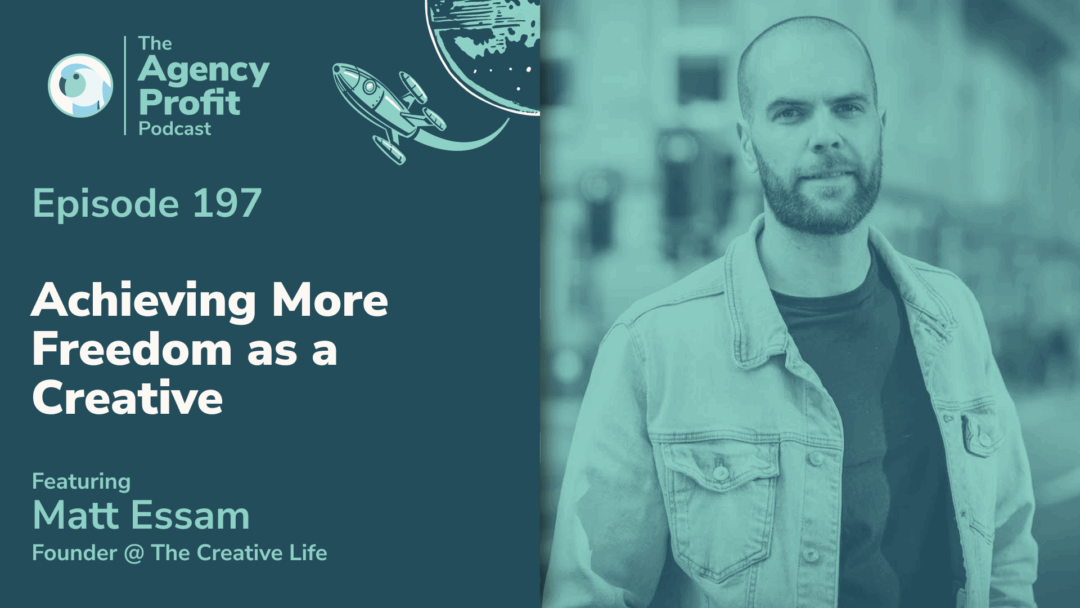Jon Morris joins us this week to discuss how to develop a budgetary and/or strategic plan to fuel the growth of your agency.
About Jon Morris
Jon Morris is the founder & CEO of Ramsay Innovations and a serial entrepreneur. Prior to Ramsay, he established Rise Interactive in 2004, as a result of his second-place finish in the University of Chicago’s prestigious New Venture Challenge. Over the next 16 years, he grew Rise from a one-person shop to one of the largest independent marketing agencies globally. After selling Rise, Jon pondered his next move and realized he was most energized when connecting and helping fellow entrepreneurs grow their businesses!
Ramsay Innovations is the product of this inspiration. Similar to Rise, Jon developed a proprietary, tech-enabled approach for surfacing hidden financial insights that drive critical business decisions. Ramsay Innovations’ mission is to transform marketing agencies by providing them with world-class, agency-specific finance management and strategic planning at a fraction of the cost – relative to hiring a CFO.
In his spare time, Jon enjoys spending time with his wife, three daughters, and two dogs. He loves soccer, having played on his alma mater’s team, Kenyon College, and he now coaches his daughter’s two soccer teams.
Points of Interest…
- The Origin Story of Ramsay 2:12
- Money Indicates Your Strategic Plan 5:19
- Calculating Gross Margin for Your Strategic Plan 11:03
- Defining Pass-Through Revenue 16:10
The Origin Story of Ramsay
Given Rise graced the INC 500, 5,000 list for nine years, I’m keen to hear how growing that business informed the specialization that Ramsay Innovations has today. What were some of the key learnings that helped Jon realize that this was something agencies need access to?
“One of the things I always found fascinating was talking to agency owners and how little they invested in sales and marketing. As a result, I had a couple of sayings – one of them being ‘It can’t be a goal unless it’s in your budget.’ So many people tell me that they want to scale, they want to grow their business, but then they don’t put anything in to sales and marketing!”
As for the second saying Jon has? Well, that’s “Everyone has a strategic plan, whether they know it or not, it’s what you put your money into.” Jon started off with an executive coaching company whereby he guided a range of clients, from interior design companies, to life insurance companies, and a cannabis consulting company.
Through these conversations teaching them the process to scale, Jon noticed the financial acumen that he was bringing them – the budgeting process, the forecasting process, the cash flow analysis – that was the secret sauce no one seemed to really have right at the smaller stage.
“I don’t think I realized at Rise how much of an advantage we had from a financial infrastructure until I started talking to more people. So, we pivoted and then decided we’re going to go all-in on agencies and on finance. That’s how we came to where we are today.”
The market is absolutely starved for true expertise that is specific to this business model. There are nuances to this business model that general accounting typically (in my opinion) does a bad job of creating value for the owner and their executive team in terms of the actual numbers being reported. There are just so many things that they can’t see unless there is some intentionality applied.
***I ask Jon to expand on his point of where you put your money being indicative of your strategic plan from 5:19 minutes. Join us, won’t you?!***
Money Indicates Your Strategic Plan
Before delving further, I want Jon to backtrack a little and expand on his adage “Everyone has a strategic plan, whether they know it or not, it’s what you put your money into” – specifically in terms of Sales and Marketing.
The notion that it is a choice is stark news for many, possibly because they have been choosing to put their money into subsidizing clients or poor culture around project management. Therefore, it doesn’t feel like you have the cash available to invest in sales and marketing like you want to. However, the reality is this should feel very much like a choice. By way of example, Jon says…
“I have a couple of clients that are both PR firms in the same market, with similar customers. One of them spends 7.5% of their revenue on sales and marketing, while the other spent $51 last month on sales and marketing. The person has spent $51 in sales and marketing is actually very proud of that. What I explained to both of them is there really is no wrong answer.”
While Jon delves into the background of each example (***from 6:23***), he comes back to Rise’s growth trajectory, which hovered between 0 and 5% EBITDA for many years. You always hear the typical agency is supposed to make 20% EBITDA, hence why Jon’s current combined clients comes to 18% EDBITDA. That wasn’t always the case, however.
“At Rise, I was investing anywhere between 13 to 18% more of my revenue into the business, I had a much larger sales and marketing budget. To me, I had a 20-year time horizon. I sold it in 16 years, so I never hit the 20-year marker, but I had a long-term vision where I wanted to feel growth. Therefore, I would put up really big sales numbers every single year.”
It’s worth pointing out that among the things people don’t realize, is the importance of Gross Margin. If you have a really low, gross margin, you don’t have money to invest which obviously hinders having a choice! In saying that, Jon has clients that are literally the exact same in size, and do the exact same thing. One has a really low gross margin, while the other – yes, you guessed it – has a really high gross margin.
The one with the low gross margin lost money and therefore unable to make all the investments they want. Meanwhile, the high-grossing company has the ability to undertake all sorts of investments, plus build cash and profitability.
Side note: our Agency Profit Toolkit is a one stop shop for you to be able to outline some of these crucial profitability numbers to a potential buyer. Spreadsheets, templates and training videos, you name it, it’s all in the toolkit. Grab yours free at the link below:
Calculating Gross Margin for Your Strategic Plan
Gross margin is one of those mysterious items whereby people can’t pinpoint what it is, or indeed how best to calculate it. And that’s why we’re here, folks!
When discussing profitability, most people talk about their bottom line and don’t realize that the foundation of profitability actually starts at the gross margin. So, let’s dig into gross margin; what is it? How should one look at it?
There are two types of revenue – gross revenue and net revenue. What’s the difference between the two? Let’s just say a company is managing media, specifically $100million in media, resulting in them getting 10%. So, they have $10million in fees.
However, you’ll hear that company say something like, “I have a $100million company!” Well, no, that’s your gross revenue… Your real revenue is your net revenue, which is that $10million. It is vital to understand what your revenue is so that when you analyze your gross margin you’re using the right denominator.
The next thing you need to consider is your bunch of expenses, which generally include people, contractors, technology licenses, travel and entertainment – all with a focus of taking care of your customers. How best to keep on top of it all? Over to you, Jon…
“If you use QuickBooks payroll, it defaults all of your payroll to one line item called Wages. If you want to know what your gross margin is, 80% of your cost of service (i.e. the group of people who service your customers) are salary and payroll. So you have to remove from that one line from Wages and move them into Cost of Goods sold area in your financial accounting system.”
When you heard the word Cost of Service, your gross margin is your net revenue minus your cost of service. As it happens, the most important number is not the absolute gross margin, rather the percentage number. What you want to do here is take your Absolute Gross Margin number and divide that by your net revenue. And, in Jon’s experience, you need to be around that 50% marker.
***Don’t worry; Jon dives into percentage examples from the 13:45 minute mark***
Defining Pass-Through Revenue
I want to get really nerdy on this and start talking about some of the nuances. Everyone listening/reading; grab those nerd goggles, we’re going into the deep end here! I want to start with the question I get all the time, which is how to define the pass-through revenue – or the difference between gross revenue and net revenue.
There’s confusion around what should be getting stripped out, beyond the obvious stuff like print budgets, media budgets, et cetera. When we start considering freelancers, white label partners, and some of these other vendors that we might be passing revenue through, how do you make the determination of what belongs in that pass-through expense category and what we bring down into the agency and consider cost of services?
“Anything, where the revenue and the cost are equal, is what I consider pass through. So, if you’re licensing technology for $1,000 a month and you’re charging the client the same amount, I consider that pass through.”
So, let’s say you’re doing search engine optimization. You hire a white label SEO provider and charge a million dollars for SEO. And the white label provider takes $800,000. Well, you’re choosing not to hire people to build that internally. Ergo, that’s not a pass-through cost – but you’re only getting a 20% margin on that investment.
Conversely, let’s say you licensed one employee, undertaking an entire pass-through whereby you license just one individual – but you charge the client for the same license fee. That shouldn’t show up on your revenue, or your cost of service. Where does it go? Well, Jon moves it into Other Income/Other Expenses on the income statement.
While the aforementioned is Jon’s definition, mine differs slightly… ***Scoot along to 18:19 minute mark to find out what that might be!***
Key Takeaway…
Among the questions that need asking at the front end of determining the correct pass-through approach would be…
- What is the business model?
- What are we trying to measure?
- The answers that we’re trying to get?
Also, if you’re looking at your business as being e.g. a $100million business, when really it’s $10million, we can make some really bad choices in terms of how we invest. Additionally, the other major metric Jon has his clients consider is viewing sales and marketing as a percent of revenue…
However, initially spend more by fixing your gross margin and then looking to invest in sales and marketing. This will result in increased lead generation than your competitive set, and you’re going to feel that growth.
In short, get yourself a healthy obsession with your gross margin. Focusing on what you need to do to improve your gross margin will give you a huge edge.
See more from Jon…
Did you learn anything new from this episode? Let us know in the comments below! We have helpful blogs designed to bolster your agency profitability, such as How To Calculate Your Billable Employee Cost-Per-Hour.
Our next installment of #APP, on June 29th, will see Marcel chat with Tyler Gillespie of Tiny Proof. Our previous blog – Episode 88 with Mike Moll – can be viewed here…
Avid #APP Listener?!
We would be eternally grateful if you could leave us a review…

Agency Profitability Tool Kit
If you’re looking for more resources to help you improve your agency’s profitability, check out the Agency Profitability Tool Kit. It’s full of templates and checklists used when consulting clients. This helps them improve profitability by over 100% in under 60 days.








Hi, Marcel
I have read your post completely, you have explained it very well.
I got complete information in this post
I will be grateful to you
Thank you keep sharing this type of post